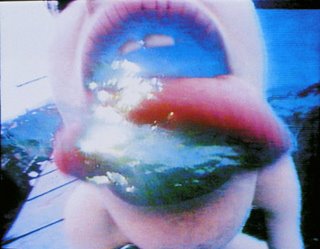Industrialisation and Cao Fei's RMB City
 |
| Dynamism of a dog on a Leash (1912) Giacomo Balla |

| |||||||||||||||||||||||||||||||||||||||||||||||||||||||||||||||||||||||||||||||||||||||||||||||||||||||||||||||||||||||||||||
| RMB City (2007-9) Cao Fei |
1. What and when was the Industrial Revolution?
Both paintings featured on this blog, that are from the early 1900s were painted by Modernist painters from the group called 'Futurists'. The Futurists celebrated the machine, and objects in motion. Their primary objective was to depict movement, which they saw as symbolic of their commitment to the dynamic forward thrust of the 20th century.
Both paintings featured on this blog, that are from the early 1900s were painted by Modernist painters from the group called 'Futurists'. The Futurists celebrated the machine, and objects in motion. Their primary objective was to depict movement, which they saw as symbolic of their commitment to the dynamic forward thrust of the 20th century.
http://www.yale.edu/ynhti/curriculum/units/1981/2/81.02.06.x.html
2. Research both Modernist paintings in order to comment on the subject
matter, form and style used to celebrate the machine and motion in each
painting. Answer the question in 2 parts for each painting.
Cao Fei's RMB City (2007-9) refers to China's recent rapid industialisation and urbanization.
(www.artspace.org.nz/exhibitions/2009/cafeintopia.asp)
RMB City is constantly nourished by new and innovative projects, and supported by leading international art institutions and networks. As a model of avant-garde urban planning, it traverses the boundaries between past and future, real and virtual to link China and the cosmopolitan contemporary world.
In Marcel Duchamp's Nude Descending A Staircase from 1912, the person is painted as if there were multiple depictions of the same person going down the stairs; the viewer can see each step being taken. In Giacomo Balla's Dynamism Of A Dog On Leash, also from 1912, one can almost feel the frantic energy of the little dog, it's feet shuffling quickly, it's tail wagging excitedly, and the hurried footsteps of the person trying to keep up.
http://www.artsology.com/motion_in_art.php
3. Research Cao Fei's RMB City (2007-9) in order to comment on this work in more depth.
i.e describe the images that has she used in her digital collage that
refer to China's present and history, and explain why has she used these
images.
RMB City is a condensed incarnation of contemporary Chinese
cities and accordingly displays most of their characteristics; that is
to say, a series of new Chinese fantasy realms that are highly
self-contradictory, full of irony and suspicion.These imagined scenes occupy the boundaries between past and future,
real and virtual and link China to the cosmopolitan contemporary world. In this environment, Cao Fei, or China Tracy as she is known in Second
Life, has cultivated different spectators and participants of RMB City.
She organizes events in this city, such as interviews, mayor’s
speeches, and Naked Idol – a nude avatar contest. Within this context,
she invites other artists to produce and show their work. As a result,
avatars both participate in the events in RMB City, and visit as an audience, while other avatars become spectators by coincidence.
http://interventionsjournal.net/2012/01/26/rmb-city-spectatorship-on-the-boundaries-of-the-virtual-and-the-real/
4. RMB City is described as a utopia/dystopia. Comment on what these terms mean, and how they can be applied to the work.
RMB City is not a real exist city. It has been created by Cao fei's avatar China Tracy
as an experimental utopian world for the 3D online virtual community of
Second Life. Institutions and investors have been invited to buy
buildings in RMB City and program events and activities within them where other Second Life users can participate. Thousands of young people in Asia and around the world are embracing Second Life as a “parallel universe” on the Internet.
5. Although the Modernist paintings and the contemporary digital work have emerged from different contexts, there are also many similarities. Comment on the
similarities that you can see in the work. Look at the moving digital
image at vimeo.com/4272260, if you have not already researched it.
There are many similarities that I can see in Cao fei's work. Apparently the Modernist paintings and the contemporary digital work have emerged from contexts and both of them linked the culture significances are revealed deeply. Also expressing own in center feeling with different materials, pursuit new ideas and display mechanical beauty.
6. Comment on other student's blogs.
www.artspace.org.nz/exhibitions/2009/cafeintopia.asp
www.artchive.com/artchive/B/boccioni/boccioni_city.jpg.html
www.artchive.com/artchive/B/balla.html
vimeo.com/4272260
www.artspace.org.nz/exhibitions/2009/cafeintopia.asp
www.artchive.com/artchive/B/boccioni/boccioni_city.jpg.html
www.artchive.com/artchive/B/balla.html
vimeo.com/4272260























